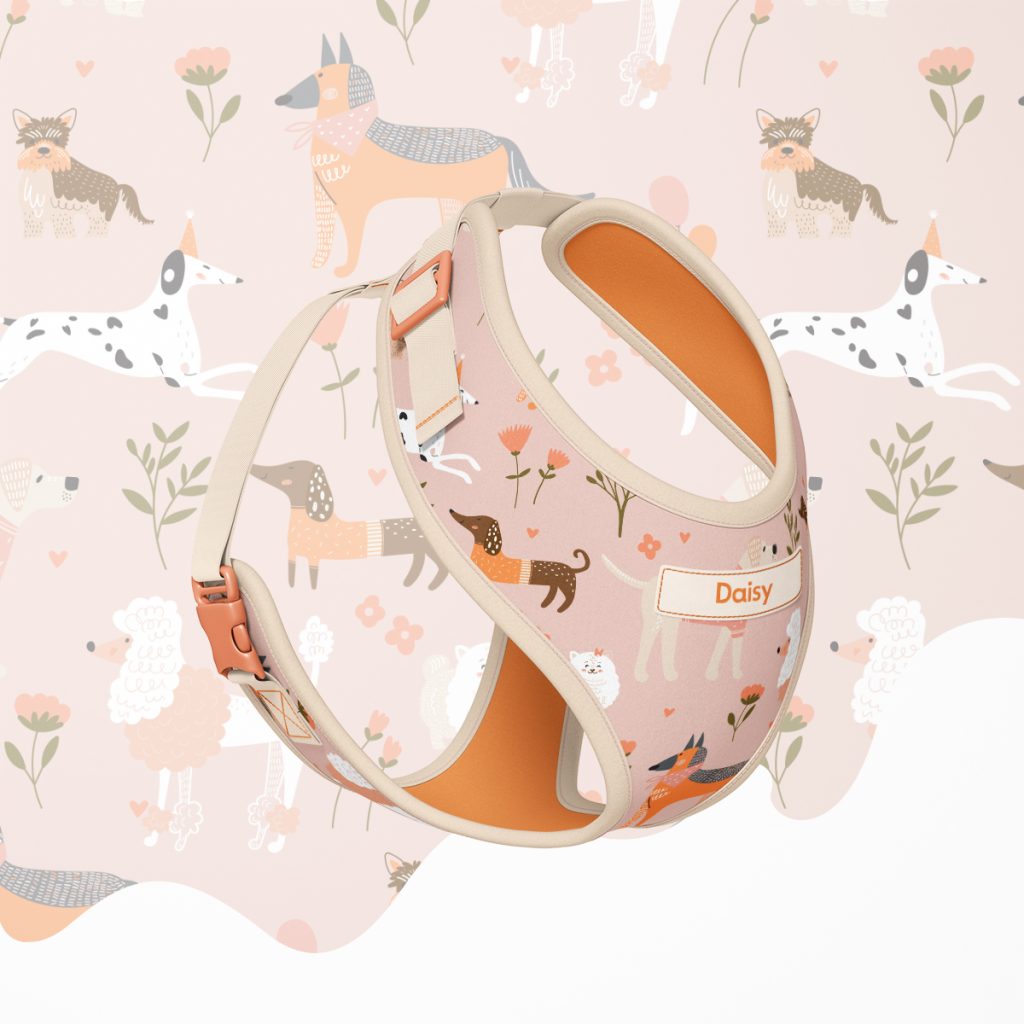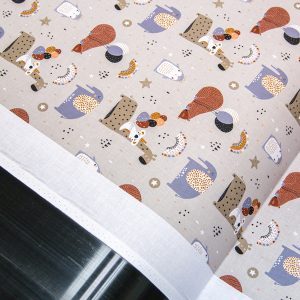Dreaming of making something special for your pet and saving some money in the process? Sewing your own dog toys can be not only rewarding but also economical. See how to easily create something unique for your pet!
Table of content
- Why is it worth it to sew dog toys?
- Materials and fabrics needed to sew dog toys. What do you need?
- How to sew a dog toy? Step by step instructions
- How to sell hand sewn dog toys? Tips for beginners!
- What else can you sew for your dog? Summary
Why is it worth it to sew dog toys?
For any dog owner, being able to create a toy yourself is not only an opportunity for personalisation, but also a guarantee that the product is made from safe and eco-friendly materials. In an era of increasing environmental awareness, handmade products are gaining in popularity, offering both uniqueness and confidence in the quality of workmanship.
Personalisation and uniqueness: By sewing your own dog toys, you have full control over their appearance and functionality. You can customise the shape, size, colour and design of the toy to suit your pet’s individual preferences. This makes each toy unique and special.
Safe and ecological: When buying ready-made toys, we are often unsure of the materials used. By sewing our own, we can choose fabrics and fillings that are safe for our dog’s health. It is worth betting on natural, non-toxic materials such as organic cotton or wool, which are environmentally friendly.
Satisfaction in creation: Creating toys for your dog by hand is also a great opportunity to develop your own handicraft skills. The satisfaction of making something useful and pretty yourself is invaluable.
Economic benefits: Sewing toys at home is also a way to save money. Ready-made products in shops are often expensive, while making a toy yourself usually involves lower costs, especially if you use materials you already have on hand.
Education and inspiration: Sewing toys yourself can also inspire further creative activities. It can become the start of a new passion or even a way to earn extra income. Selling handmade toys can generate additional income and allow you to develop a small business, gaining recognition among animal lovers.
Materials and fabrics needed to sew dog toys. What do you need?
Before you start sewing, it’s a good idea to familiarise yourself with the basic materials and tools needed to make a dog toy. Here are a few key items that you should not be missing:
Base fabrics
This is a natural fabric, free from chemicals and dyes, making it safe for your dog’s health. Organic canvas is also very durable, meaning toys made from this material will last a long time and withstand heavy use.
This is an excellent choice if you want a toy that is not only durable, but also easy to clean. Softshell is resistant to dirt and moisture, which is especially important for toys that will be used outdoors.
Microfiber is a lightweight but durable material that is soft to the touch yet resistant to damage. Microfiber toys are comfortable for dogs and easy to clean.
Recycled cotton is an eco-friendly choice that is not only durable but also environmentally friendly. This fabric is soft yet durable, making it an excellent option for dog toys. In addition, cotton is a natural material that does not contain harmful chemicals.
Outdoor Fabric is a very durable material that is often used in the manufacture of military bags and clothing. It is resistant to abrasion and tears, making toys made from Outdoor Fabric extremely durable.

Filling
You can use a variety of materials to fill your toy to ensure the right softness and durability.
- High-grade polyester foam: this is one of the most commonly chosen fillings due to its flexibility and durability. Polyester foam does not deform easily, which means that the toy retains its shape for a long time.
- Cotton or wool: Natural fillings such as cotton or wool are also a good option. They are soft, safe and environmentally friendly, but can be less durable than synthetic materials.
- Silicone balls: An alternative to traditional fillings, silicone balls are hypoallergenic and crease-resistant. They make the toy more resilient and comfortable to chew.
Sewing accessories
Don’t forget the basic sewing accessories you need to make a durable and safe dog toy:
- Thread: Choose strong, sturdy threads to ensure the durability of your stitches. Nylon threads are particularly recommended for their strength and resistance to tearing.
- Needles: Choose the right needles for the type of fabric you intend to sew with. Needles for heavier fabrics, such as canvas or softshell, should be strong and sharp.
- Scissors: sharp, precise scissors are essential for cutting fabric accurately. It is a good idea to have several pairs of scissors in stock, including one for cutting fabric and one for cutting thread.
- Sewing machine: although sewing by hand is possible, having a sewing machine speeds up the process considerably and ensures that your seams last longer.
- Measuring tapes and rulers: Essential for accurately measuring fabrics and preparing templates.
Equipping yourself with the right materials and accessories is the first step to creating a durable, safe and unique dog toy. This will make the whole sewing process simpler and more enjoyable, and the end result is sure to please both you and your four-legged friend.
How to sew a dog toy? Step-by-step instructions
Before you get started, take a look at our simple step-by-step instructions on how to quickly and efficiently create a toy for your dog:
Preparing the design
Choose the right design and size of toy: Think through what shape and size toy will work best for your dog. You can choose a classic shape, such as a bone, ball or tug, or go for something more original, such as a plush fish or animal. Also think about the functionality of the toy – whether it should be soft for chewing or more robust for pulling and tugging. Then create or find a ready-made template to help you cut out the material with precision.
Cutting the fabric
Cut the fabric according to the template: Prepare your chosen fabric, lay it out on a flat surface and pin the template with pins. Remember to add about 1 cm seam allowance around the entire shape. Using sharp scissors, carefully cut out the toy shape. If you are planning additional elements such as ears, tail or paws, cut them out at this stage too. Make sure all pieces are cut out accurately and symmetrically.
Sewing a dog toy
Move on to the sewing stage: sew the individual parts of the toy together according to the design. Start with the smaller parts, such as the ears or paws, and sew them to the main body of the toy. Sew the outer parts of the toy, joining them right side inwards so that the seams are inside when you turn the toy right side out. Leave a small opening through which you can fill the toy. You can also use a sewing machine to speed up the process and get more even stitches.
Finishing
Fill the toy with the material of your choice: Fill the toy through the hole you have left with the filling of your choice, such as polyester foam, cotton or silicone balls. Make sure the filling is evenly distributed and sufficiently compacted so that the toy is soft but still strong enough. Once filled, carefully close the opening. Additionally, reinforce all seams, especially in the areas most likely to stretch and bite, to make the toy as durable as possible.
How do you sell hand-sewn dog toys? Advice for beginners!
Wondering how to turn your hobby into extra income? Here are some tips:
Use social media
Social media is a powerful tool to promote your craft. Create accounts on popular platforms such as Instagram, Facebook and Pinterest. Regularly post photos and videos that show the toy-making process, finished products, and happy dogs playing with your products. Use relevant hashtags to increase the reach of your posts and reach a wider group of animal lovers.

Tell your friends what you do
Start your promotion with your immediate surroundings. Let your family, friends and acquaintances know about your new venture. Ask them to share the information in their circles. Many people may be interested in buying unique toys for their pets or giving them as gifts.
Set up your own website
Having a professional website is a great way to showcase your products and build your brand. On the site, include photos and descriptions of your toys, a price list, information about the materials used to make them and a contact form. A website can also act as an online shop, making it easier for customers to place orders.
Take advantage of platforms for selling handicrafts
Use popular platforms such as Etsy or Ebay, which specialise in selling handicrafts. Creating an account on these sites will allow you to reach a wide audience who are looking for unique, handmade products. Make sure your products are well described and photographed to attract the attention of potential customers.
Take care to develop your skills
The world of handicrafts is dynamic and constantly evolving, so it’s important to keep up to date with new techniques and trends. Attend workshops, online courses and read industry publications to hone your skills. Experiment with different materials and designs to create increasingly innovative and attractive products.
What else can you sew for your dog? Summary
In addition to toys, there are many other accessories you can sew for your dog, such as harnesses or treat bags. You are only limited by your imagination! Sewing for dogs is a great way to keep your dog comfortable, stylish and functional, while allowing you to get creative with your crafting skills.
Harnesses: sewing harnesses for your dog is a practical solution to keep your dog safe and comfortable during walks. You can sew harnesses from sturdy materials and customise them to your pet’s size and needs. Personalised harnesses can come in a variety of colours and designs, allowing you to stand out on your walk.
Leggings: Sew a comfortable bed for your dog, tailored to his size and needs. You can use soft fabrics such as fleece, cotton or velour, and add durable filling such as foam or silicone pellets. Dog beds can come in a variety of shapes, from rectangular to round, as well as removable covers for washing.
Dog clothing: If you have a knack for sewing, try sewing clothing for your dog, such as jackets, jumpers or raincoats. You can use different fabrics, such as Softshell, to keep your dog warm and protected from the weather.
Velvet blankets: small blankets are ideal for keeping your dog comfortable at home, in the car or on a trip. You can sew the blanket from soft, warm materials such as cotton and add embroidery or appliqué to give it a personal touch.
By considering sewing your own dog toys, not only can you give your pet something unique, but you can also enjoy creating and save money. Plus, handmade accessories can become a hit with friends and customers if you decide to sell your wares. Ready to take action? Get ready for a great craft adventure and make something beautiful for your dog today!





